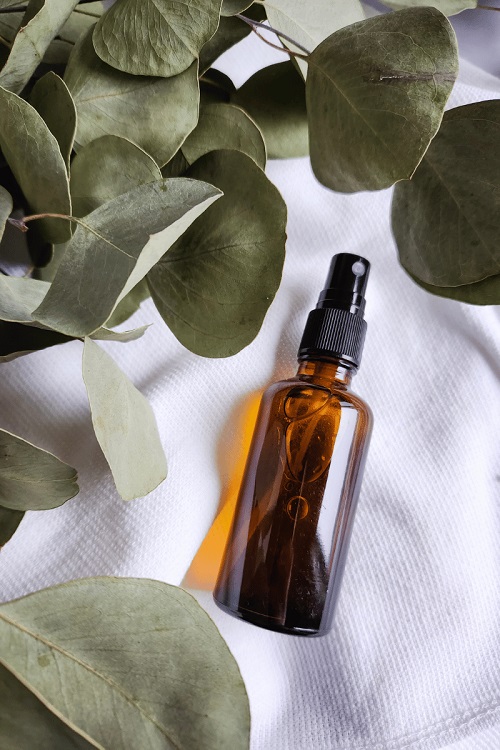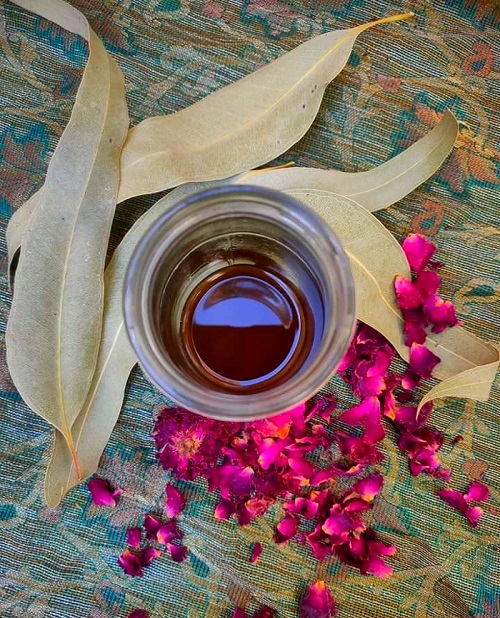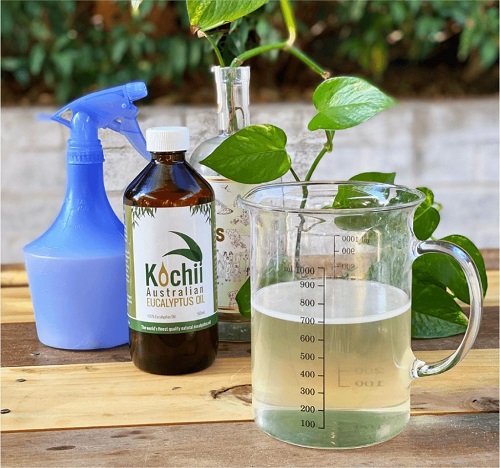While store-bought eucalyptus oil is surely good, why not try to make your own DIY Eucalyptus Oil as a money-saving passion project?
Eucalyptus oil is so much sought-after all over the world because of its anti-microbial, anti-inflammatory, and pain-relieving properties, making this oil like a natural antiseptic and also like a natural insect repellent. While you may be familiar with store-bought eucalyptus essential oil, how about diying your own batch of this therapeutic blend?
Why Make Your Own DIY Eucalyptus Oil?
Eucalyptus essential oil is quite abundant in online and offline stores. While you can still get therapeutic benefits from the eucalyptus oil that you buy, you can never be totally sure about the purity of the oil.
Thus, it is not only an educational and fun project that can quickly become your hobby, but once you get the hang of it, you can even start saving money long-term while harvesting the purest eucalyptus oil for yourself.
You must note that the eucalyptus oil you may make at home, while pure, may not have the same potency as store-bought oils. That would be because most commercially sold eucalyptus oils undergo a steam-distilling process that cannot be replicated at home without using the same complicated and expensive machinery.
Plus, you would also need to be highly trained to be able to produce high-quality essential oil, even if you do get your hands on home steam distillers. This is why you should stick to the methods detailed below when making your own DIY eucalyptus oil.
How to DIY Your Own Eucalyptus Oil?
Here are the top two methods for making your own eucalyptus oil at home.
# Method 1: Using a Crock Pot or Slow Cooker to Make Eucalyptus Oil
- First, you must source fresh eucalyptus leaves or buy them. Eucalyptus trees generally grow wild in warmer climates, and in colder climates, you will find them being sold as potted plants or shrubs in nurseries.
- When you are sourcing leaves, ensure that you get a good handful, around a quarter of a cup of leaves, for every cup of oil that you want to make.
- The best time of day to cut eucalyptus is early in the morning when its leaves contain a high concentration of oil. Wash and rinse the leaves well in water and set them aside to dry. You can also choose to dry them with a cloth or towel, ensuring most of the water is gone.
- Start by measuring out a cup (8 ounces) of a light carrier oil—options like cold-pressed virgin olive oil, coconut oil, or almond oil work well. Choose an oil with a mild scent to ensure that the eucalyptus fragrance stands out.
- If you want to make a smaller batch, simply adjust the quantities accordingly, such as using 4 ounces of oil with 1/8th cup of eucalyptus leaves.
- For larger quantities, maintain a ratio of 4 parts oil to 1 part eucalyptus leaves. To enhance the eucalyptus essence, brush the leaves by hand before mixing them into the oil.
- Either add the leaves and oil mix to a crock or put the slow cooker on low heat, making sure the lid is on. You must also ensure that at least one-fourth part of the oil rests above the leaves.
- Allow this mixture to steep for at least 6 hours. The longer it steeps, the stronger your eucalyptus will be.
- After you have your eucalyptus oil, you can strain it through a fine mesh strainer when it cools. The oil should be caught in a dark glass jar, but if you don’t have that, any jar will do. Just ensure that the jar is stored in a cool, dark place.
- Also, remember that you must wait for the oil to have completely cooled before pouring it into the jar not to crack the jar from the heat. Your jar should be air-tight with tight lids and no moisture or water inside, as that can cause mold.
# Method 2: Infusing Oil With Eucalyptus Leaves in the Sun
- Gather two mason jars, one for making your eucalyptus oil and the other for storing it. If you don’t have mason jars, you could use one jar to make the eucalyptus oil and the other to store it. Depending on how much eucalyptus oil you intend to make, you can use pint jars, quart jars, or larger jars.
- Ensure your jars are clean and dry, as any water or moisture can result in mold. The jar you use for making the oil can be clear or dark glass. A dark glass jar is best for storing the eucalyptus oil.
- Gather eucalyptus leaves in similar steps and proportions as in the crock pot or slow cooker method. To reiterate, you will use 4 parts carrier oil to 1 part eucalyptus leaves.
- The key is to use 1/4 cup of eucalyptus leaves for each cup of oil. Put the eucalyptus leaves in the mason jar and then pour in a layer of sea salt, which will ultimately help extract the oil from the leaves.
- With the handle of a long spoon, start smashing up the eucalyptus leaves into the bottom of the jar, thus releasing more of their natural oils.
- This is the step where you pour your carrier oil over the smashed eucalyptus leaves and the salt mix. Allow the leaves to steep for at least 2 weeks in a place where the jar gets warm sunshine for about 8 to 12 hours daily. As with every method, the longer you let the mixture steep, the stronger the oil will be.
- Throughout the process, ensure that the jar is tightly sealed and shake it well before stirring the leaves in together with the oil. For this method to work, you must continue shaking the jar every 12 hours or so until the steeping is finished.
- Strain the leaves by pouring them through cheesecloth or a tea strainer into the open mouth of your second mason jar. Discard the leaves that the strainer catches and wipe any mess made by the soil with a damp cloth.
- Though this is an optional step, you can label your jar of eucalyptus oil when storing it in a cool, dark cupboard or pantry. You would also want to write down the date when the oil was made so you know when it expires. You could also try storing the oil in the fridge.
Things to Keep in Mind When Making Eucalyptus Oil
- When you absolutely cannot grow or even find fresh eucalyptus, you can try using dried eucalyptus instead. The oil won’t be as strong as if you were using fresh eucalyptus leaves, but it will surely work.
- Do not be surprised or worried if your oil takes on a dark green pigment. The leaves are naturally dark green, so it is quite normal for some of those pigments to transfer to the oil.
- You must also remember that when you make eucalyptus oil in a slow cooker, your house might just REEK of the leaves. So, be prepared for the fresh, crisp smell. Also, ensure that you make the oil on a nice day to open all the windows for good ventilation.



